Demography
Austria is a landlocked country in southern Central Europe. The federal territory comprises nine provinces: Burgenland, Lower Austria, Carinthia, Upper Austria, Salzburg, Styria, Tyrol, Vorarlberg and Vienna with a total area of about 84,000 square kilometres. The Republic is divided into 114 judicial districts and 2,093 municipalities (as of 1.1.2022, source: Statistics Austria: Administrative structure, visited 31.08.2022). Vienna is the federal capital of Austria as well as a province.
According to the latest data, Austria has 9,061,800 inhabitants (as of 1.7.2022, source: Statistics Austria: Population statistics, visited 31.08.2022). The largest metropolitan areas with the most inhabitants are Vienna, Graz, Linz and Salzburg. The federal capital Vienna is the only city in Austria with more than one million inhabitants. Currently, around 1.96 million people live there (as of 1.7.2022, source: Statistics Austria: Population statistics, visited 31.08.2022). Measured by the number of its inhabitants, Lower Austria is the second and Upper Austria the third largest federal province (see figure 1). The share of women in the population is 51% (as of 1.1.2021, source: Statistics Austria: Population by sex and age groups, Demographic Yearbook 2020, visited 31.08.2022).
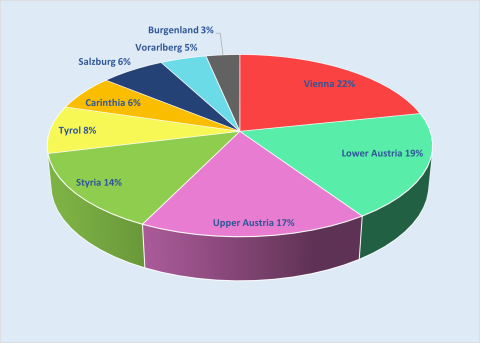
Figure 1: Share of the population by province 1.7.2022, in per cent (rounded)
Source: Statistics Austria: Female inhabitants by province, visited 09.08.2022
As in other industrialised countries, increasing life expectancy and declining birth rates are leading to a growth of older population groups also in Austria. On 1.1.2022, the average age of the population was 43.2 years, which corresponds to an increase of 6 years of life since 1980 (source: Statistics Austria: Population by sex and age groups, Demographic Yearbook 2020, visited 31.08.2022). In 2020, the life expectancy of women was 84 years and that of men 79 years (source: Statistics Austria: Population by demographic characteristics, visited 31.08.2022). Figure 2 shows the change in the age pyramid over time: Since 1980, the age group 0-19 years has shrunk by 10%, the age group 20-64 years (prime working age) has grown by 7% and that of the elderly (65+) has increased by 3%.
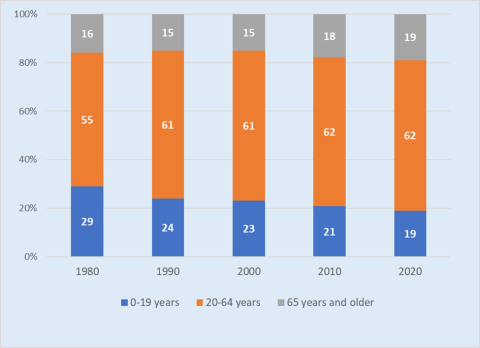
Figure 2: Development of the population in Austria by age group, in per cent (rounded)
Source: Statistics Austria: Population by sex and age groups, Demographic Yearbook 2020, visited 31.08.2022
The population in Austria is steadily growing. This is due on the one hand to the rising birth rate - whereby in 2020, due to the Corona pandemic, the number of deaths (91,599) exceeded the birth rate (83,603) for the first time in years - and on the other hand to increasing migration. Since the mid-1980s, positive net migration (number of migrants entering minus the number leaving) has been observed. It intensified after the collapse of the Soviet Union and Yugoslavia. Since the turn of the millennium, more and more people have decided to live in Austria, mainly for economic reasons. Since 2015, a high net migration has been recorded: Due to a massive influx of refugees (especially from Syria, Afghanistan and, since 2022, from Ukraine due to the war), the share of people with non-Austrian citizenship has increased considerably (see figure 3). In general, most people migrate from EU and EFTA countries. In recent years, the share of persons with citizenship from Asian countries has also been growing (see figure 4).
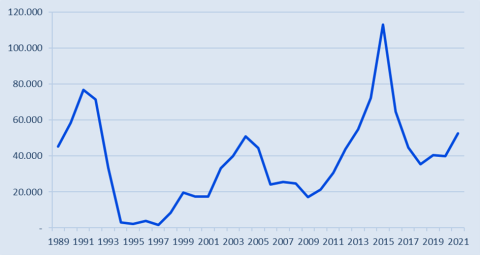
Figure 3: Development of the migration balance in Austria, total numbers
Source: Statistics Austria: Migration statistics, special data analysis (11.08.2022); in house calculations
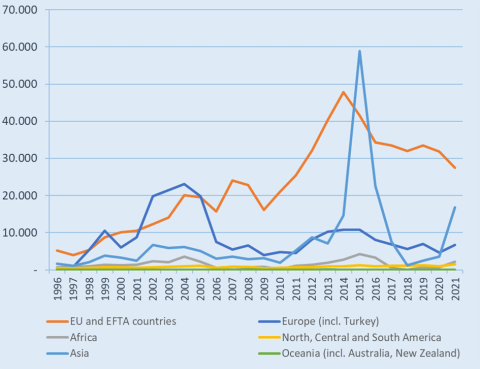
Figure 4: Development of the migration balance in Austria by nationality of migrants, total numbers
Source: Statistics Austria: Migration statistics, special data analysis (11.08.2022); in house calculations
The unemployment rate in Austria is lower than in other European countries. Even after the economic and financial crisis in 2008, it rose minimally. From 2013 onwards, however, it became apparent that unemployment increasingly posed a challenge for the Austrian labour market. In 2020, the unemployment rate jumped to 10% due to the Corona pandemic. In 2021, the economic development picked up again, which means that the employment situation is expected to ease for the time being (2021: unemployment rate of 8%) and labour force participation rates will remain high (2021: 77%) (see figures 5 and 6). The future development is strongly dependent on various factors (e.g. Ukraine war, energy and raw material supply, inflation, global economic climate).
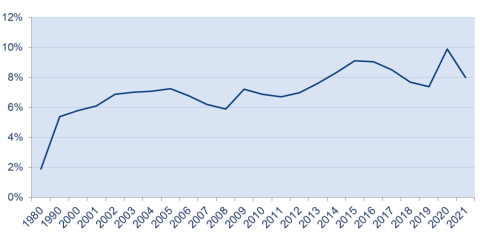
Figure 5: Development of the unemployment rate, in per cent
Source: Public Employment Service Austria: Unemployment rates (national definition), visited 18.08.2022
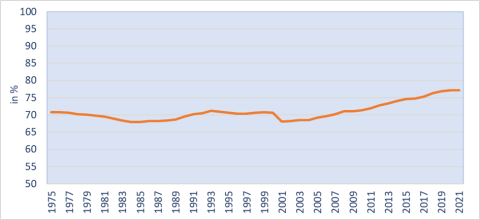
Figure 6: Development of the employment rate (age 15-64 years), in per cent
Source: Federal Department of Labour and Economic Affairs: Labour force participation rates by gender in comparison of time, Labour Market Information System AMIS, visited 18.08.2022
Compared to other EU countries, Austria has a relatively low youth unemployment rate, which was 10% in 2021 according to EUROSTAT data (average EU-27 2020: 17%). Figure 7 shows the volatile development of unemployment rates for the under 25 years old according to the national definition of the Public Employment Service, which amounted to 6.5% in 2021. The reason for the continued good labour market integration of adolescents and young adults is, in particular, the broad range of educational programmes leading to vocational qualifications (school-based and dual training) with direct career entry and high labour market acceptance.
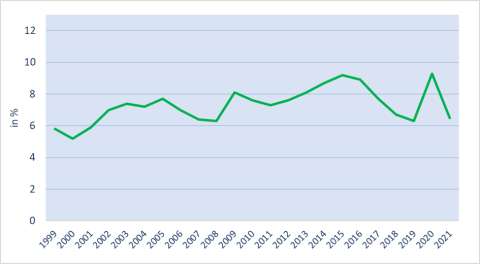
Figure 7: Development of the youth unemployment rate (age 15-24 years), in per cent, national calculation
Source: Public Employment Service Austria: Youth unemployment in comparison of time, special data analysis of labour market research and career information (18.08.2022)
Languages
The official language in Austria is German, which is also the mother tongue for a large part of the population. Austrian German differs from High German in pronunciation as well as in some grammatical peculiarities.
Recognised minority languages are Hungarian, Slovenian, Burgenland-Croatian, Czech, Slovak, Romany and sign language. In the mixed-language districts of Carinthia, Slovene is also considered an official language. In some districts of Burgenland, Hungarian and Croatian have equal status to German as an official language.
The language (of instruction) in Austrian day-care centres, schools and in the tertiary sector is German. In some cases, bilingual teaching (in day-care centres: bilingual education), mostly in English, or mother-tongue teaching (for better integration) is used in these institutions. Some schools, especially international schools, are run exclusively in a foreign language (mainly English or French). In the tertiary sector, too, there are courses of study in which education takes place partly or entirely in a foreign language (predominantly English).
In order to preserve minority languages, some primary and secondary schools, especially in Carinthia and Burgenland, enable children to be taught in Slovenian, Hungarian or Croatian. In some cases, bilingual forms - with half of the subjects in the minority language - are also offered.
In total around 250 different languages are spoken in Austria. Besides German, the most widely spoken languages are Turkish, Serbian-Bosnian-Macedonian, Croatian, Romanian, Polish and Hungarian (source: Statistics Austria, 2001 census; more recent official data are not available). Furthermore, regional dialects are of great importance in Austria.
Religions
The Roman Catholic Church is the largest religious community in Austria. Historically, it shaped the Habsburg monarchy as the “state church” until the mid 19th century. The Basic State Law of 1867 heralded the first steps of secularisation, the separation of church and state, which, however, was not completed until the beginning of the Second Republic. Furthermore, the immigration of people of different denominations has led to a more diverse religious landscape.
The Austrian state and its legal system are religiously neutral and guarantee religious freedom for all. Mutual acceptance, tolerance and dialogue between all religious communities are important cornerstones. All churches and religious communities in Austria enjoy special legal protection: disparagement of religious teachings or obstruction of the free exercise of religion are criminal offences and are prosecuted as such under Austrian criminal law. Currently there are 16 legally recognised churches and religious communities (source: Federal Chancellery: Statistics, visited18.08.2022):
- Alevi Religious Community in Austria
- Old Catholic Church of Austria
- Armenian Apostolic Church in Austria
- Evangelical Church A.B. and H.B.
- Evangelical Methodist Church in Austria
- Free churches in Austria
- Greek Oriental (= Orthodox) Church in Austria
- Islamic Religious Community in Austria
- Israelite Religious Society
- Jehovah's Witnesses in Austria
- Catholic Church
- Church of Jesus Christ of Latter-day Saints (Mormons) in Austria
- Coptic Orthodox Church in Austria
- New Apostolic Church in Austria
- Austrian Buddhist Religious Society
- Syrian Orthodox Church in Austria
All pupils who belong to a legally recognised church or religious community receive religious instruction of their confession in public schools (as a compulsory subject, but with the possibility of deregistration), whereby the expenses for religious instruction are financed by the state. For example, religious schoolbooks are also co-financed by the schoolbook campaign (free provision of pupils with the necessary teaching materials by the Federal Department of Education, Science and Research).
Religious communities maintain private day care centres (crèches, after-school care centres, kindergartens) as well as public schools at primary and secondary level. Private kindergartens are governed by the corresponding provincial laws of the nine Austrian provinces. Religious schools are covered by the Private Schools Act (Federal Act of 25 July 1962 on Private Schools) (cf. 2.4 Organisation of Private Education). Around 6% of all schools are run by a recognised religious community as a school operator in the school year 2020/21 (source: Statistics Austria: Schools in the school year 2020/21 by school operator, Education in figures 2020/21 – volume of tables, visited 29.08.2022). For this reason they – especially the Catholic Church – are counted among the most important private education providers in Austria. Teachers of religion are trained at university colleges of teacher training or theological faculties at universities.
With the school year 2021/22, ethics was introduced as a compulsory subject for upper secondary school pupils who are without a religious confession or opt out of religious education, after a 20-year school pilot project (“Schulversuch”) (source: Federal Department of Education: Ethics as a new compulsory subject, , visited 18.08.2022).
Relevant legislation
- Act Governing the Statuary Recognition of Religious Communities
- Act on School Education for Ethnic Minorities in Burgenland
- Basic Law on the General Rights of Nationals
- Concordate (Treaty)
- European Convention for the Protection of Human Rights and Fundamental Freedoms
- External Legal Relations of the Jewish Religious Community
- Federal Act governing the legal personality of religious denominations
- Federal Constitutional Law
- Federal Law on the External Legal Relations of the Greek-Oriental Church in Austria (Orthodox Act)
- Federal Law on the External Relations of the Oriental Orthodox Churches in Austria
- Federal Law on the Religious Education of Children 1985
- Federal Law Regarding the External Legal Relations of the Protestant Church
- Law on Ethnic Groups
- Law on the Recognition of Followers of Islam as Religious Society
- Law Regarding Interconfessional Relationships
- Minority Schooling Act for Carinthia
- State Treaty of Saint-Germain (1919)
- State Treaty of Vienna (1955)
- Treaty governing questions of education
.
.
